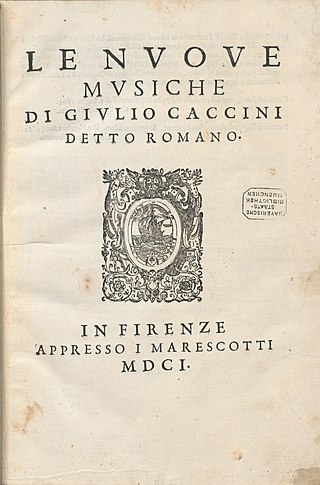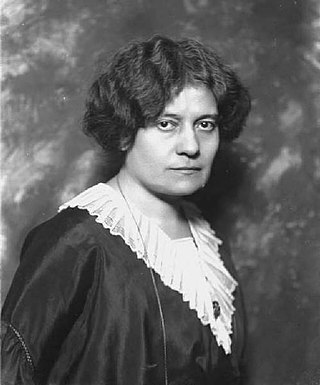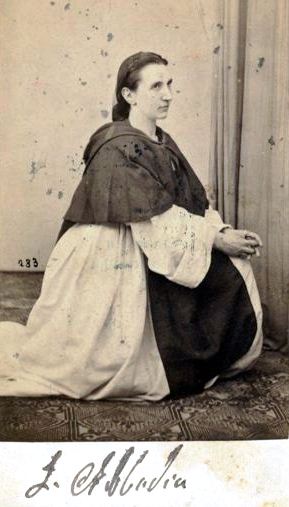This article needs additional citations for verification .(October 2012) |
Lucia Quinciani (c. 1566, fl. 1611) was an Italian composer.
This article needs additional citations for verification .(October 2012) |
Lucia Quinciani (c. 1566, fl. 1611) was an Italian composer.
She is the earliest known published female composer of monody. [1] She is known only by one composition, a setting of "Udite lagrimosi spirti d’Averno, udite", from Giovanni Battista Guarini's Il pastor fido, found in Marcantonio Negri's Affetti amorosi [1] second volume (1611), [2] in which Negri refers to Quinciani as his student. [2] She may have worked in Venice or Verona.

Lucia di Lammermoor is a dramma tragico in three acts by Italian composer Gaetano Donizetti. Salvadore Cammarano wrote the Italian-language libretto loosely based upon Sir Walter Scott's 1819 historical novel The Bride of Lammermoor.

Lucia Elizabeth Vestris was a British actress and a contralto opera singer, appearing in works by Mozart and Rossini, among others. While popular in her time, she was more notable as a theatre producer and manager. After accumulating a fortune from her performances, she leased the Olympic Theatre in London and produced a series of burlesques and extravaganzas, especially popular works by James Planché, for which the house became famous. She also produced his work at other theatres she managed.

Antonio Negri was an Italian political philosopher known as one of the most prominent theorists of autonomism, as well as for his co-authorship of Empire with Michael Hardt. Born in Padua, Italy, Negri became a professor of political philosophy at the University of Padua, where he taught state and constitutional theory. Negri founded the Potere Operaio group in 1969 and was a leading member of Autonomia Operaia, and published highly influential books, including Empire and Multitude: War and Democracy in the Age of Empire, urging "revolutionary consciousness."

L'elisir d'amore is a melodramma giocoso in two acts by the Italian composer Gaetano Donizetti. Felice Romani wrote the Italian libretto, after Eugène Scribe's libretto for Daniel Auber's Le philtre (1831). The opera premiered on 12 May 1832 at the Teatro della Canobbiana in Milan.

In music, monody refers to a solo vocal style distinguished by having a single melodic line and instrumental accompaniment. Although such music is found in various cultures throughout history, the term is specifically applied to Italian song of the early 17th century, particularly the period from about 1600 to 1640. The term is used both for the style and for individual songs. The term itself is a recent invention of scholars. No composer of the 17th century ever called a piece a monody. Compositions in monodic form might be called madrigals, motets, or even concertos.

Michael Praetorius was a German composer, organist, and music theorist. He was one of the most versatile composers of his age, being particularly significant in the development of musical forms based on Protestant hymns.

Giuditta Angiola Maria Costanza Pasta was an Italian opera singer. A soprano, she has been compared to the 20th-century soprano Maria Callas.

Patrizia Ciofi is an Italian operatic coloratura soprano.
The patter song is characterised by a moderately fast to very fast tempo with a rapid succession of rhythmic patterns in which each syllable of text corresponds to one note. It is a staple of comic opera, especially Gilbert and Sullivan, but it has also been used in musical theatre and elsewhere.
Marcantonio Negri was an Italian composer, singer, and musical director of the early Baroque era. He was in the musical establishment of St. Mark's Basilica in Venice at the same time as Monteverdi, and was well known as a composer at the time.

Ada Negri was an Italian poet and writer. She was the only woman to be admitted to the Academy of Italy.

Antonio "Zacara" da Teramo was an Italian composer, singer, and papal secretary of the late Trecento and early 15th century. He was one of the most active Italian composers around 1400, and his style bridged the periods of the Trecento, ars subtilior, and beginnings of the musical Renaissance.
Settimia Caccini was a well-known Italian soprano and composer during the 1600s, being one of the first women to have a successful career in music. Caccini was highly regarded for her artistic and technical work with music. She came from a family of well-known composers and singers, with her father being Giulio Caccini and her sister Francesca Caccini. Settimia Caccini was less well known as a composer because she never published her own collection of works. Instead, nine works are attributed to her in two manuscripts of secular songs. Settimia was known much more for her talent as a singer, and she performed for nobility with the Caccini family consort and as a soloist. Coming from a musical family, she was able to lead herself to her own fame and success.
Sulpitia Lodovica Cesis was born on 15 May 1577 in Modena, Italy. She was an Italian composer as well as a well-regarded lutenist. Her father was Count Annibale Cesis and he gave 300 pieces of gold for her dowry when she entered the Augustinian convent in Modena in 1593. She was a nun at the convent of Saint Geminiano in Modena, although some sources report it as Saint Agostino. Her only known work is a volume of Motetti Spirituali, which she wrote in 1619.

Adriana Basile was an Italian composer and singer of the Baroque period.

Luigia Abbadia (1821–1896) was an Italian operatic mezzo-soprano known for her fine voice, secure technique, and a strong temperament. Possessing an uncommonly wide range, Abbadia sang several roles traditionally portrayed by sopranos in addition to roles from the mezzo-soprano repertoire.

Cavalleria rusticana is an opera in one act by Pietro Mascagni to an Italian libretto by Giovanni Targioni-Tozzetti and Guido Menasci, adapted from an 1880 short story of the same name and subsequent play by Giovanni Verga. Considered one of the classic verismo operas, it premiered on 17 May 1890 at the Teatro Costanzi in Rome. Since 1893, it has often been performed in a so-called Cav/Pag double-bill with Pagliacci by Ruggero Leoncavallo.
Teodoro Cottrau was an Italian composer, lyricist, publisher, journalist and politician. He specialised in "folksy" Neapolitan songs.
Valeria Miani was a playwright noted for her works Celinda, a Tragedy, and Amorosa Speranza. She was from the Republic of Venice. Miani married Domenico Negri in 1593, with whom she had five children, Isabetta, Isabella, Lucretia, Giulio, and Anzolo. Miani is known for being the first woman to publish a tragedy prior to the 18th century. In addition, she was the third woman in Italy to write in the newly popular genre, the pastoral. Miani's works explored themes such as cross-dressing, death and punishment, female virtue, and female resilience.